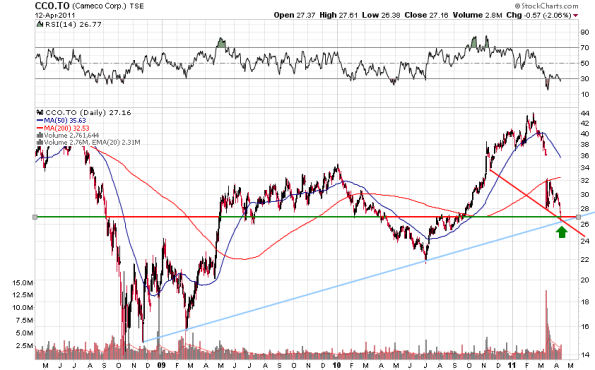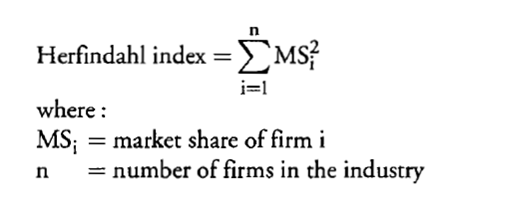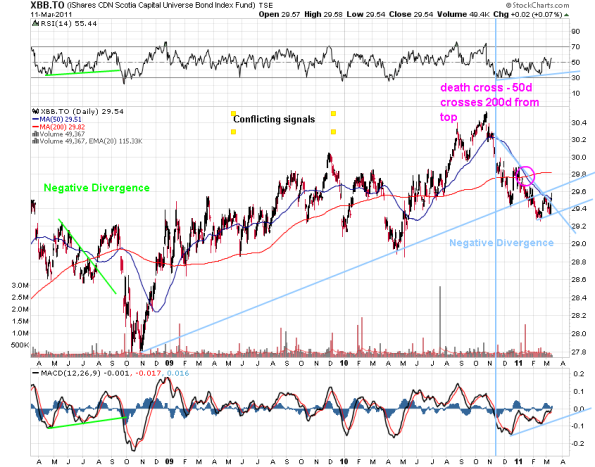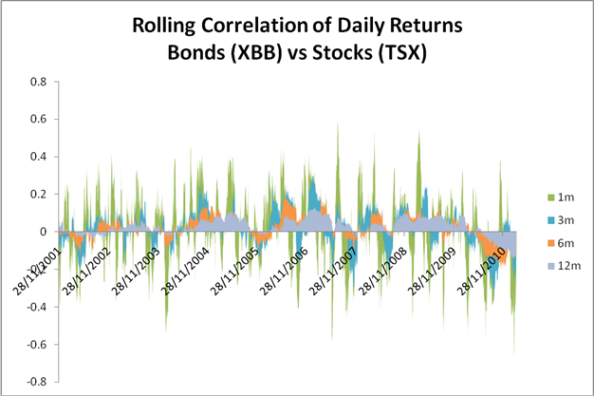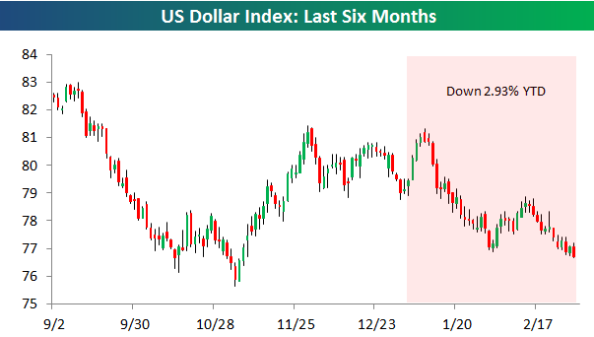Archive
Nitrogen pure play stocks – TNH, UAN, RNF
I have been watching these 3 pure play nitrogen fertilizer stocks…
Terra Nitrogen Co. LP (TNH), CVR Partners (UAN), Rentech Nitrogen Partners (RNF)…
All three had a very good run since the beginning of the year to until about Monday, 9 Jan 2012… gaining anywhere from 11-22% in 5 days… however, they have fallen sharply in the past couple days…
in my opinion, the up trend is likely to continue…
TNH – $166-170 entry point
UAN – I am inclined to wait for a little bit even though the recent drop has retraced the 50% fibonacci levels… I think good entry points in the $25 area..
RNF – this is a new issue and hasn’t traded long enough to deduce anything meaningful… although based on the recent run-up, I want to wait till it drops to the 50% fibonacci level around $18
sitting out, staying put and clarity of thought
I have been meaning to write this post for the last few days… and have finally found the time.
At the beginning of stock market decline in Aug, I was about 7% stocks, 8% bonds and 85% cash… today I’m about 17% stocks, 8% bonds & 75% cash…
A lot of the blogs/comments I have read over the past two years and particularly during the stock market decline in Aug/Sep made me really realize the virtue and reward of staying out and staying put…
Knowing when to sit out and watch the market from the side lines is just as important as finding good trade setups and investment ideas… if you don’t find any, be patient, read/study, analyze and pound when the time is right… I have this much from many bloggers particularly the folks on Stocktwits.
Sitting out has tremendous benefits:
- I didn’t not feel the need to look at my portfolio 3 times a day even after the market dropped 10% and was dropping more… more time to do things I want to do
- I was able to consume and more importantly comprehend whatever I read, be it MSM or the very informative, educational and mostly unbiased financial/econo-blogosphere – it is natural to comprehend less when you are worried.
- I had all the time in the world to read about topics I was interested in rather than looking for topics/posts that would make me feel better and confirm my supposed rationale for holding stocks
- I could analyze a trade or an investment idea with fewer inherent biases
Sitting out is one of the hardest things to do possibly because of the fear of missing out… overcome the fear of missing out and you will have a clearer mind to analyze more opportunities ahead.
TSX trading near 2-year low… 11000 next downside target?
Will Level 7 be the death knell for Uranium stocks?
Japan upgraded increased the severity level of the Fukushima nuclear accident to the highest possible at level 7… global equities and uranium stocks were hard hit today.
Uranium miners were recovering from the sharp fall and it looked like the worst was over but except with Level 7 the worst might be yet to come? Almost 4 weeks ago I posted charts of uranium miners Cameco & Uranium One… let’s see where we stand today. There are many exploration and development stage companies but these two are the prime Canadian uranium producers.
Today’s price action in Cameco (CCO.TO) is interesting and perhaps suggests that the worse is over…
- The stock traded an intraday low of 26.38 and sharply recovered to close at 27.16 which is above major support lines (blue & red/green).
- As I pointed out in my previous post, if we break here, downside targets are 26, 24 & 22.
- On the upside, there is plenty resistance in the 30-34 area and my guess is that this stock will be range bound given the fundamental situation.
Uranium One (UUU.TO) is hanging on to support at rising trend line (short blue line).
- Next support is near the 3.25-3.38 range and is rather strong with 3 converging trend lines, long blue line, pink line and bottom support/resistance line.
- After that support is at just above 3.00…
- On the upside, there is strong resistance at 4.00 which is where the recent relief rally reversed…
CFA Reading: Equity Concepts & Techniques
CFA Level 2 – Equity Investments; Study Session 11, Reading 38 in 2011 curriculum/Reading 36 in 2010.
This reading introduces some of the basic concepts of analyzing equity investments. I’m excluding the theoretical parts and will focus mostly on bits of interesting corollaries…
A global industry analysis should examine:
- return potential evidenced by demand analysis
- value creation
- industry life cycle
- competition structure
- competitive advantage
- competitive strategies
- co-opetition and the value net (yes…co-opetition is a word)
- sector rotation
- risk elements evidenced by market competition
- value chain competition
- government participation
- cash flow covariance
Dupont Analysis
Global financial analysis involves comparing company ratios with global industry averages. In this context, DuPont analysis uses various combinations of the tax retention, debt burden, operating margin, asset turnover, and leverage ratios.
Extended Dupont formula for Return on Equity (ROE):
Franchise Value or PVGO
Intrinsic P/E can be broken down into tangible P/E and Franchise P/E. Tangible P/E assumes constant earnings and Franchise P/E is the present value of growth opportunities divided by next year’s earnings i.e. PVGO/E. Think of tangible P/E as the average industry growth rate and franchise value as the additional growth that is unique to the company/industry.
r = required rate of return
b = Retention Ratio = (1 – Dividend Payout Ratio)
Analyze Effects of Inflation on Valuation
Inflation affects historical inventory and borrowing costs on reported earnings, as well as the inflation tax reflected in capital gains taxes (i.e. you purchase an asset today which increases in value equal to inflation rate, you decide to sell the asset and incur capital gains tax… you actual are losing capital because the rise in asset value is due to inflation).
To analyze the effect of inflation on a firm’s valuation, you must estimate the degree of inflation flow-through denoted by λ in textbook.
A company/industry with high inflation flow-through rate will be valued more because it can pass the higher input costs to the consumer and maintain profit margins.
Herfindahl Index (we have seen this before in Corporate Finance)
This index is used to measure competition in an industry. The US Department of Justice uses this index to measure industry concentration. The formula is straightforward…
I doubt that Canada’s Competition Bureau uses this index considering the prevalence oligopolistic industries in Canada (banking & communication are two big ones)
When will the sell off in Cameco & Uranium One end?
Cameco Corp – Symbol CCO on TSX & CCJ on NYSE
Short-term Downside targets: 26.87, 26, 24 and 22
Uranium One: Symbol UUU on TSX
Downside target: 3 & 2.5
XBB and correlation between Canadian Stocks & Canadian Bonds
XBB – Conflicting technical signals
- XBB broke out of recent downtrend line but… not above the previously broken long-term uptrend line
- RSI & MACD are rising but price is declining
- Also death cross signal – 50 day SMA crossed 200 day SMA from above
Fundamentally, Canadian interest rates are bound to rise in the near future which is not good for bonds.
Conclusion…keep a close watch for the next couple weeks
What is the correlation between returns on Canadian stocks and Canadian bonds?
I’m going to use the bond ETF, XBB to represent the DEX Universe Bond Index and S&P TSX Composite to represent stocks.
Correlation of Daily Returns is:
- fairly volatile for smaller samples i.e. less than 3 months. (blue & green lines)
- low and positive from 2001 to March 2010
- -0.2 since March 2010 i.e. when one goes up, the other goes down.
Lets look at the correlation of monthly returns… partly because the daily volatility has been much higher since the financial crisis and that might bias the results. Again, it is a similar story, the smaller the sample, the greater tha
Correlation of monthly returns is similar to daily returns except:
- 12 month rolling correlation deviates between 0.5 and -0.5 which is on the high side.
- 3 yr correlation has been positive and low, around 0.1 since Jan 2009.
CFA learnings applied – The Dollar’s Impact on Stocks So Far in 2011
Bespoke has a nice post on the impact of US Dollar’s depreciation on earnings of US companies… this is a very simple yet very applied example of the CFA Level 2 reading on Multinational Operations.
The US dollar index (trade weighted measure against other currencies) is down about 3% in 2011. How does this affect earnings of US companies? US companies can be broadly classified in to two categories: those that do 100% of business is in US and in USD and those that do a significant share of their business globally… it is the second category of companies that are most affected by currency fluctuation…
How does USD depreciation affect stocks?
When the dollar is rising, US companies that do most or all of their business within our borders stand to benefit, while US companies with large amounts of revenues outside of the country lose out. The opposite occurs when the dollar is declining — companies with large amounts of international revenues benefit at the expense of the domestics.
If the above is not intuitive, visit my earlier post here.
As shown in the second chart below, the average YTD performance of stocks in the decile with the largest percentage of international revenues is 7.68%, which is by far the best performing decile. The average YTD performance for stocks with no international revenues is 3.09%. This performance is inline with what one would expect given the dollar’s decline.
Loosely speaking, about 3-4% of the 7.68% rise in the top performing decile can be attributed to currency depreciation and the rest to the general market rise…
Going forward, if you expect the dollar to continue its decline, the stocks with large amounts of international revenues should continue to outperform. If you expect the dollar to reverse course and head higher, the stocks with little or no international revenues should start to pick up.
…
Emerging Markets – Can’t get past the (inflation) hump?
Where are emerging markets going? Do the emerging market central banks and Treasurers have the balls to stop inflation or they can’t live without the growth on stereoids?
The MSCI iShares Emerging Markets index has failed twice to break the 2008 highs… are we heading lower to test May 2010 levels or break the 2008 highs?
World Stock Markets near 52 Week Highs
Close to overbought territory… Japanese equity markets clobbered due to 15-year high Yen.


